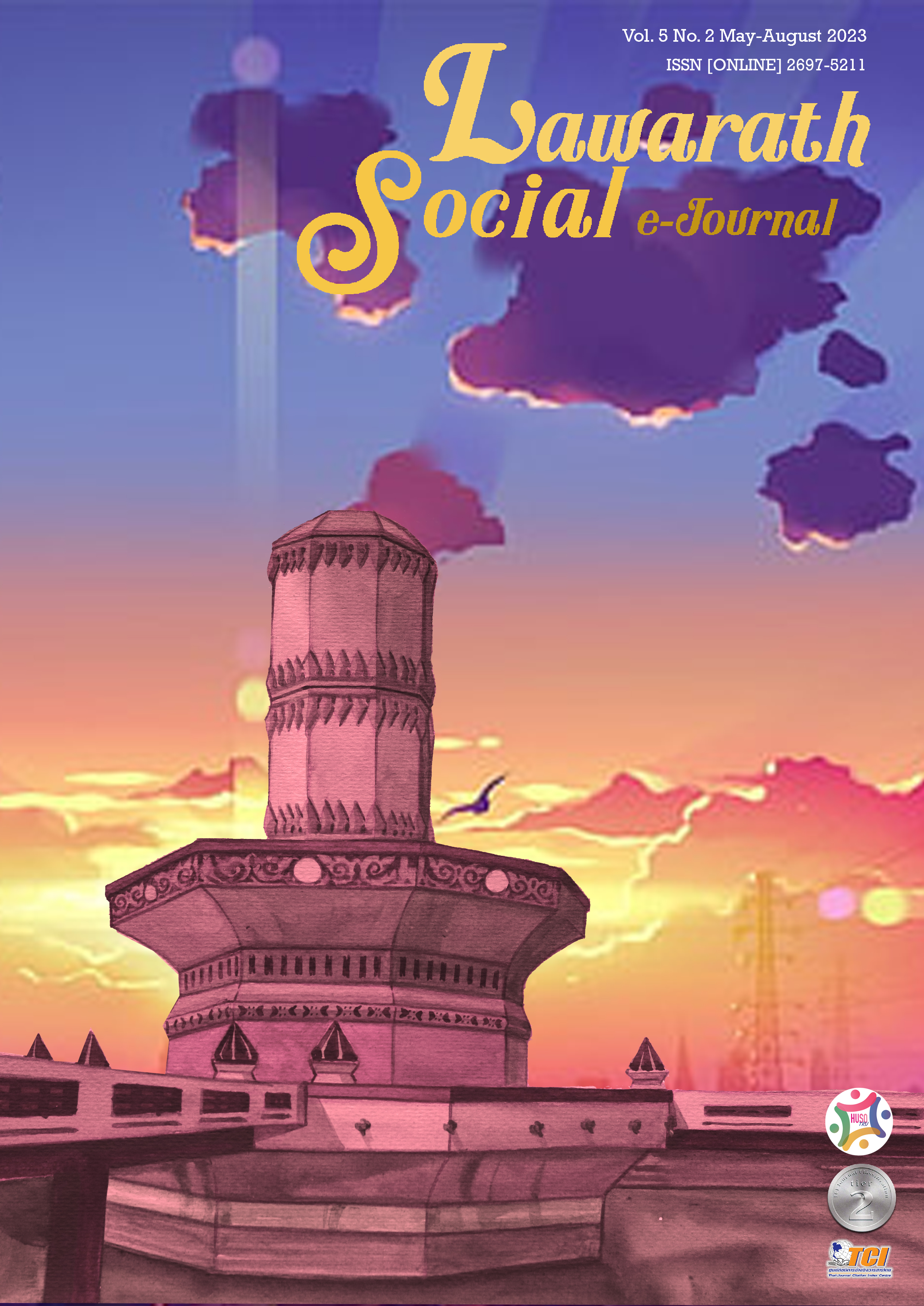Lexical Expressions of Compare and Contrast in Applied Linguistics Research Articles
Keywords:
Lexical Expressions of Compare, Lexical Expressions of Contrast , Applied Linguistics ArticlesAbstract
This study examines lexical expressions of compare and contrast used in applied linguistics research articles. The previous study in the field randomly selected English as a Foreign Language (EFL) learners to investigate their problems of using lexical expressions of compare and contrast in their writing. The results revealed that approximately 80 percent of the learners did not have sufficient knowledge to write compare and contrast paragraphs and essays accurately. This study filled the gap by examining lexical expressions of compare and contrast in English applied linguistics articles. Due to the reliability, Swan’s (2016) principles were employed to select approximately 120,000 words comprising 41 samples of lexical expressions of compare and contrast. The samples were gathered from the Journal of English for Specific Purposes and Journal of English for Academic Purposes because of their high quality and their indexation in the SCOPUS database. The results showed that 90.24 percent of the lexical expression was the lexical expression of contrast which was used to express the contrastive messages. The words such as even if, however, and although were used in high frequency. This is to indicate the gaps in the previous research studies. It is expected that the results of this study will be useful for EFL learners in terms of applying the lexical expression of compare and contrast in writing more effectively.
Downloads
References
Adel, A. (2023, January). Adopting a ‘Move’ Rather Than a ‘Marker Approach to Metadiscourse: A Taxonomy for Spoken Student Presentations. English for Specific Purposes. 69, 4-18.
Aksit, T., &Aksit, N. (2022, October). Establishing an institutional EAP Teacher Development Scheme Based on BALEAP’s Competency Framework: A Critical Review of The Competencies. English for Specific Purposes, 60, 1-12.
Asadnia, F., &Atai, M. R. (2022, November). Examining the Effectiveness of an Online EAP Course in Developing Researchers’ Virtual Conference Presentation Skills. Journals of English for Academic Purposes, 60, 1-12
Bastola, M., N., &Ho, V. (2022, November). ‘Don’t Become So Much High Sounding’: Power Dynamics in Master’s Thesis Viva. Journals of English for Academic Purposes, 60, 1-12.
Chien, S., &Li, W. (2022, November). Problems of Writing the Doctoral Dissertation Discussion Section: Advisors’ and Their Doctoral Students’ Perspectives from Natural and Applied Sciences and Social Sciences. Journals of English for Academic Purposes, 60, 1-12.
Ciornei, S., I., &Dina, T. A. (2015, May). Authentic Texts in Teaching English. Procedia-Social and Behavioral Sciences, 180, 274-279.
Drayton, J., &Coxhead, A. (2023, January). The Development, Evaluation and Application of an Aviation Radiotelephony Specialised Technical Vocabulary List. English for Specific Purposes, 69, 51-66.
Hammann, L., A., &Stevens, R. J. (2003, June). Instructional Approaches to Improving Students' Writing of Compare-contrast Essays: An Experimental Study. Journal of Literacy Research, 35(2), 731-756.
Hyland, K., &Jieng, F. (2022, November). Metadiscourse Choices in EAP: An Intra-journal Study of JEAP. Journals of English for Academic Purposes, 60, 1-12.
Jurkovič, V. (2022, October). Authentic Routine Ship-shore Communication in The Northern Adriatic Sea Area – A Corpus Analysis of Discourse Features. English for Specific Purposes, 68, 47-59.
Kirkpatrick, L., &Kline, P. D. (2009, August). Planning Text Structure as a Way To Improve Students’ Writing from Sources in The Compared-contrast Genre. Learning and Instruction, 19(4), 309-321.
Liardet, C., &McGrath, D. (2023, January). Grammatical Metaphor Across Disciplines: Variation, Frequency, and Dispersion. English for Specific Purposes, 69, 33-47.
Melchers, G., &Shaw, P. (2013). World Englishes. UK: Routledge.
Parkinson, J., Watterson, C., & Whitter, L. (2022, October). Constructing Arguments in Engineering Student Case Studies. English for Specific Purposes, 68, 14-30.
Radford, A. (2009). An introduction to English Sentence Structure. Cambridge: Cambridge University Press.
Rajendram, S, &Shi, W. (2022, November). Supporting International Graduate Students’ Academic Language and Literacies Development Through Online and Hybrid Communities of Practice. Journal of English for Academic Purpose, 60, 1-12.
Sadehgi, H., Biniaz, M., &Soleimani, H. (2016, September). The Impact of Project-based Language Learning on Iranian EFL Learner’s Comparison and Contrast Paragraph Writing Skills. International Journal of Asian Social Science, 6(9), 510-524.
Sawaki, T. (2023, January). High Use of Direct Questions and Relative Absence of Promotional Intention in Japanese Peer-reviewed Research Article Introductions Compared to Their English Counterparts. English for Specific Purposes, 69, 19-32.
Swan, M. (2016). The Practice of English Language Teaching. Oxford: Oxford University Press.
Toba, R., Noor, W. N., &Sanu, L. O. (2019, June). The Current Issues of Indonesian EFL Students’ Writing Skills: Ability, Problem, and Reason in Writing Comparison and Contrast Essay. Dinamika Ilmu, 19(1), 57–73.
Wee, B. V., &Banister, D. (2016, July). How to Write a Literature Review Paper?. Transport Reviews, 36(2), 278-288.
Downloads
Published
How to Cite
Issue
Section
License

This work is licensed under a Creative Commons Attribution-NonCommercial-NoDerivatives 4.0 International License.



